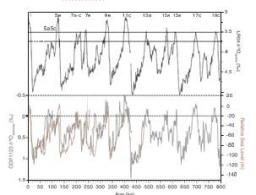
Interglacials, including the present (Holocene) period, are warm, low land ice extent (high sea level), end-members of glacial cycles. Based on a sea level definition, we identify eleven interglacials in the last 800,000 years. Data compilations suggest that despite spatial heterogeneity, Marine Isotope Stages (MIS) 5e (last interglacial) and 11c (~400 ka ago) were globally strong (warm), while MIS 13a (~500 ka ago) was cool at many locations. A step change in strength of interglacials at 450 ka is apparent only in atmospheric CO2 and in Antarctic and deep ocean temperature. The onset of an interglacial (glacial termination) seems to require a reducing precession parameter (increasing Northern Hemisphere summer insolation), but this condition alone is insufficient. Terminations involve rapid nonlinear reactions of ice volume, CO2, and temperature to external astronomical forcing. The precise timing of events may be modulated by millennial-scale climate change that can lead to a contrasting timing of maximum interglacial intensity in each hemisphere. The end of an interglacial (glacial inception) is a slower process involving a global sequence of changes. Interglacials have been typically 10–30 ka long. The combination of minimal reduction in northern summer insolation over the next few orbital cycles, owing to low eccentricity, and high atmospheric greenhouse gas concentrations implies that the next glacial inception is many tens of millennia in the future.
Authors : A. Berger, A. Landais, … V. Masson-Delmotte et al.
Ref. : Reviews of Geophysics, Vol. 54 Reviews of Geophysics, Vol. 54






